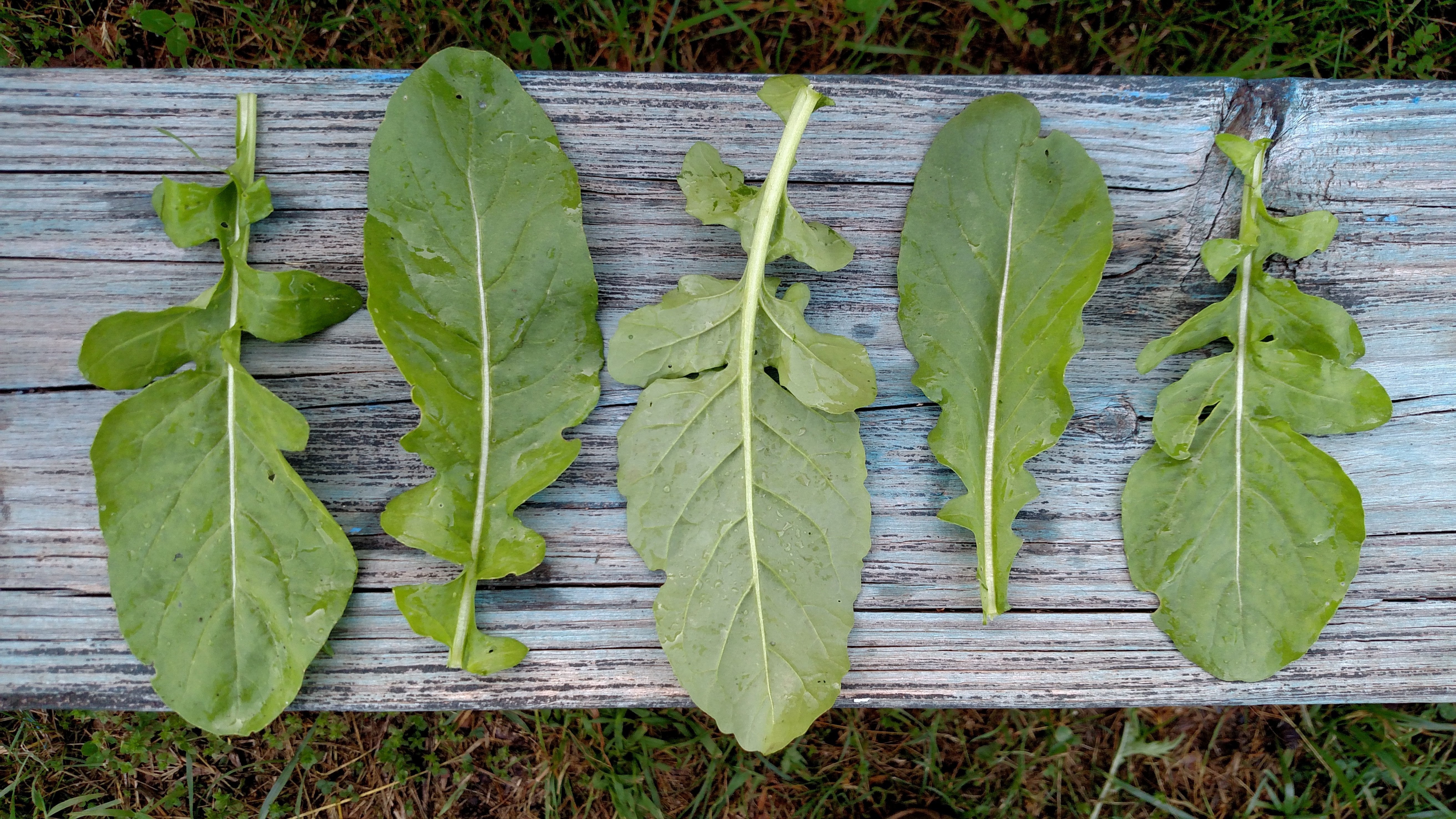Arugula (Eruca sativa) is an edible annual green, sometimes called rocket or roquette. It’s been used since Roman times, but only cultivated on a large scale in the last 20 years. It has become somewhat of a symbol of the “foodie” movement.
Before the 90s it was usually harvested from the wild. It has naturalised in temperate regions around the world, including northern Europe and North America. Arugula is native to the Mediterranean region, found from Morocco and Portugal, east to Lebanon and Turkey. In India, the mature seeds are known as Gargeer. It is in the cabbage (Brassicaceae) family, but is not the same plant as wild rocket, which is also edible, but more like mustard.
Nutrition:
Arugula is a good source of: Thiamin, Riboflavin, Vitamin B6, Pantothenic Acid, Zinc and Copper. And a very good source of: Dietary Fiber, Vitamin A, Vitamin C, Vitamin K, Folate, Calcium, Iron, Magnesium, Phosphorus, Potassium and Manganese.
Some consider it an aphrodisiac.
It has a strong peppery taste and is primarily eaten raw in salads. It is usually mixed with other greens in a mesclun (from the French “mescla” meaning “to mix”). The leaves, seed pods and mature seeds are all edible. The flowers are often used to add color to salads.

Recipes:
In Italy it is often used on pizzas, added just before baking ends, so that it will not wilt. It’s also cooked as a vegetable side, or used raw with pasta or meats.
In the historic region of Slovenian Littoral (now southwest Slovenia and, in part, Italy), it was combined with boiled potatoes, or added to soup. It would be served with cheese burek.
On the island of Ischia in the Gulf of Naples, a digestive alcohol called rucolino is made from the plant. The liquor is a local specialty, enjoyed the way limoncello or grappa is. It has a sweet, smooth peppery taste.
In Egypt the plant is commonly eaten with ful medames (mashed fava beans, olive oil, chopped parsley, onion, garlic, and lemon juice) for breakfast, and regularly accompanies local seafood dishes.
There are several yummy sounding arugula recipes here, including arugula pesto, couscous and puttanesca. That page was put together by the Mariquita farm in northern CA.
Growing Arugula:
Arugula is a fast-growing cool-season salad green – often ready to harvest just 4 weeks after seeding. It prefers rich soil with a pH of 6 to 6.8, but it tolerates a wide variety of conditions. Seeds germinate quickly even in cold soil.
Plant as soon as soil can be worked in spring. Avoid planting after other cabbage family crops. Plant ¼ inch deep and 1 inch apart in rows, or broadcast alone or mixed with other greens. Gradually thin to 6-inch spacings using thinnings for salads.
It forms a rosette of deeply lobed leaves. Plants become erect when heat induces bolting.
Succession plant for every 2 to 3 weeks for a continuous supply until about a month before your average first frost date. Good plant for intercropping.
You can slow bolting by reducing heat with shade and avoiding moisture stress with regular watering.
Arugula often self-seeds. It requires insects for pollination and will not cross with other members of the mustard family.
To harvest Arugula, pick off the outside tender leaves at the base of the plant. Leave the center growing point for future harvesting. Larger leaves tend to get tough and very bitter tasting so harvest them small. Hot weather will also make the leaves bitter.
Seeds:
After bolting, arugula will send up small white flowers with dark veins. Seed pods will form along the stem. These can be eaten fresh – they have a strong radish flavor, or you can let the pods dry and harvest the seeds for planting next year.
Sow True Seed carries Organic, Wild, and Slow Bolt Arugula seeds.

Sources:
Nutritional info
History (Wikipedia)
| |
Article Written by: Angie Lavezzo |
|
About the Author: Angie Lavezzo is the former general manager of Sow True Seed. Beyond her professional role at Sow True, Angie's passion for gardening extends into personal hands-on experience, fostering plants and reaping bountiful harvests. |


